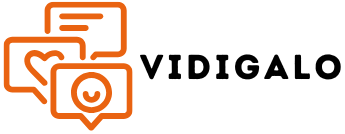Table of Contents
ToggleIn today’s digital landscape, social media isn’t just a platform for sharing updates; it’s a powerful tool for businesses looking to connect with their audience. Social media optimization (SMO) plays a crucial role in enhancing visibility and engagement across various channels. By leveraging effective strategies, brands can maximize their reach and foster meaningful interactions with followers.
As competition intensifies, understanding the nuances of SMO becomes essential. It involves not just posting content but also tailoring it to resonate with specific audiences. By optimizing profiles, utilizing hashtags, and engaging with followers, businesses can create a vibrant online presence that drives traffic and boosts conversions. Embracing social media optimization is no longer optional; it’s a vital component of any successful marketing strategy.
Understanding Social Media Optimization
Social media optimization (SMO) plays a critical role in enhancing brand visibility and engagement across digital platforms. Businesses must grasp key elements of SMO to effectively connect and interact with their target audience.
Importance of Social Media Optimization
Social media optimization improves online presence. Enhanced visibility leads to increased brand awareness and customer engagement. Effective SMO strategies result in higher traffic to websites, which subsequently boosts conversion rates. Competitive analysis reveals that brands employing robust SMO practices outperform competitors lacking these strategies. Metrics such as follower growth and interaction rates demonstrate the tangible benefits of prioritizing SMO.
Key Components of Social Media Optimization
- Tailored Content: Create content customized for each platform. Different audiences on platforms like Facebook, Twitter, and Instagram require distinct messaging and formats.
- Optimized Profiles: Ensure profiles are complete and appealing. Use relevant keywords, professional images, and clear bios to improve discoverability.
- Regular Engagement: Actively engage with followers by responding promptly to comments and messages. Engagement fosters community and increases brand loyalty.
- Hashtags and Keywords: Use relevant hashtags and keywords strategically. They enhance searchability and expand post reach to broader audiences.
- Visual Elements: Incorporate high-quality visuals. Images and videos capture attention and are essential for boosting engagement rates.
- Analytics Tracking: Monitor performance through analytics tools. Understanding engagement metrics helps refine strategies and improve content over time.
Strategies for Effective Social Media Optimization

Effective social media optimization (SMO) relies on strategic approaches that enhance visibility and foster genuine engagement. Here are key methods for optimizing social media presence.
Content Creation and Curation
- Tailor content for platforms: Different social media platforms attract diverse audiences. Create posts that resonate specifically with users on Facebook, Instagram, Twitter, and LinkedIn.
- Use multimedia elements: Incorporate high-quality images, videos, and infographics. According to research, posts with visuals see a 94% higher engagement rate.
- Leverage user-generated content: Encourage customers to share their experiences. Reposting authentic user content builds trust and community around the brand.
- Utilize storytelling: Craft compelling stories that connect emotionally with audiences. Authentic narratives enhance brand memorability and engagement.
- Maintain a consistent posting schedule: Regular updates keep the audience informed and engaged. Tools like Buffer and Hootsuite can help schedule posts for optimal times.
Engagement Techniques
- Interact with followers: Promptly respond to comments and messages. More interactions lead to increased visibility through platform algorithms.
- Conduct polls and surveys: Engaging audiences via polls fosters interaction and provides insights into customer preferences.
- Host live sessions: Live Q&A sessions or product launches create real-time engagement. They allow brands to connect with audiences intimately and authentically.
- Create contests and giveaways: Encourage participation through incentivized contests. These generate buzz and expand reach when participants share with their networks.
- Utilize hashtags strategically: Use relevant and trending hashtags to increase discoverability. Research shows posts with at least one hashtag receive 12.6% more engagement than those without.
Implementing these strategies enhances social media presence, improves interaction rates, and fosters a deeper connection between brands and their audiences.
Tools and Resources for Social Media Optimization
Utilizing the right tools and resources is crucial for effective social media optimization. Various analytics and scheduling tools support brands in enhancing their social media strategies.
Analytics Tools
Analytics tools offer insights into audience behavior and content performance. They track metrics like engagement rates, reach, and conversion rates, allowing brands to refine their strategies based on data-driven decisions.
- Google Analytics: Monitors traffic sources and user interactions across platforms.
- Hootsuite Analytics: Provides in-depth reporting on social media performance.
- Sprout Social: Offers powerful insights into audience demographics and engagement trends.
- Buffer Analyze: Simplifies tracking post performance and audience engagement metrics.
- Facebook Insights: Delivers data specific to Facebook, helping users understand audience interactions and post effectiveness.
Scheduling Tools
Scheduling tools facilitate consistent posting and managing content across multiple platforms. They help brands maintain an active presence without overwhelming daily workloads.
- Hootsuite: Enables scheduling for various social platforms from a single dashboard.
- Buffer: Automates post scheduling and offers analytics for performance tracking.
- Later: Focuses on visual content scheduling, particularly for Instagram.
- Sprout Social: Provides scheduling along with analytics and engagement features.
- CoSchedule: Integrates social media scheduling with overall content marketing efforts.
Incorporating these tools into a social media strategy enhances efficiency and creates opportunities for deeper audience engagement.
Measuring Success in Social Media Optimization
Measuring success in social media optimization (SMO) involves assessing various performance metrics. Understanding these metrics enables brands to fine-tune strategies and maximize engagement.
Key Performance Indicators (KPIs)
Key performance indicators play a crucial role in evaluating SMO effectiveness. Common KPIs include:
- Engagement Rate: Measures interactions (likes, shares, comments) relative to total followers or impressions, indicating content resonance.
- Follower Growth: Tracks the increase in followers over time, showcasing brand popularity and reach expansion.
- Click-Through Rate (CTR): Represents the percentage of users who click on links within posts, measuring content effectiveness in driving traffic.
- Conversion Rate: Calculates the percentage of users completing desired actions (e.g., purchases, sign-ups) after engaging with social media content.
- Impressions: Counts the number of times posts appear in users’ feeds, offering insights into overall visibility.
These KPIs provide quantifiable metrics to assess social media performance and inform future strategies.
Analyzing Data and Insights
Analyzing data and insights from social media platforms is vital for informed decision-making. Brands should utilize analytics tools to gather and interpret key metrics. Important aspects of data analysis include:
- Audience Demographics: Understand the characteristics of followers, such as age, gender, and location, allowing for targeted content creation.
- Content Performance: Identify which types of content generate the most engagement, enabling optimization of future posts.
- Post Timing: Study the days and times when posts receive the most interaction, facilitating strategic scheduling.
- Trend Tracking: Monitor shifts in user behavior and preferences over time to remain agile and relevant.
By analyzing data comprehensively, brands can refine their SMO strategies for improved performance and audience connection.
Embracing social media optimization is crucial for brands aiming to thrive in a competitive digital environment. By implementing tailored strategies and leveraging the right tools, businesses can significantly enhance their online presence. Engaging with followers and analyzing performance metrics leads to informed decisions that drive growth.
As the digital landscape continues to evolve, staying ahead with effective SMO practices will not only improve visibility but also foster lasting connections with audiences. Brands committed to refining their approach will likely see improved engagement and conversions, positioning themselves for long-term success.


